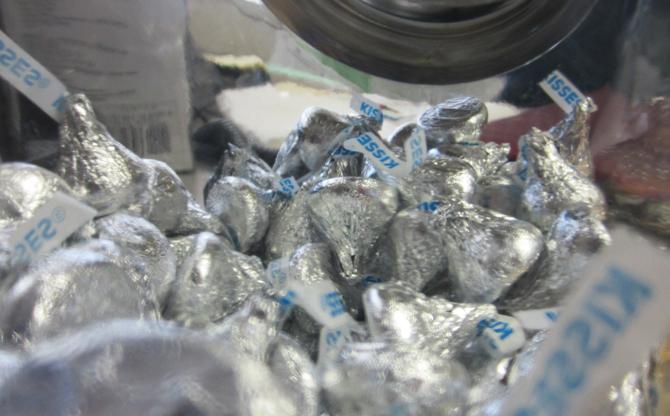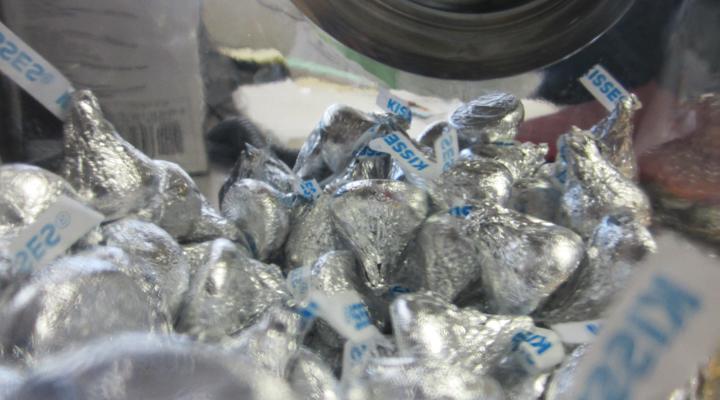
Amongst scattered papers and pens, a medium-sized glass jar of Hershey’s Kisses sits at the edge of geometry teacher David Greenstein’s desk.
“Do you like chocolate?” He offers a couple candies from the jar.
“Oh, I’m okay.”
“Are you sure? This is not a bribe … Take a couple. I love these things. Take another one — no? You sure?”
Greenstein has been dipping into the store of chocolate since the beginning of the year, but the jar is only a little less than half full. A Hershey’s Kiss is usually a reward — either for himself, or for his students.
“For one thing, I love chocolate. I’m a chocoholic,” Greenstein said. “And then there are times when it’s nice to have a little reward or pat on the back for [students] doing a job well done.”
The candy does not always end up being given to the student with the highest grade in the class. Greenstein looks for displays of genuine effort, like the student who attempts to solve a proof at the board and gets it wrong — but still had the guts to try.
It is a small reward, so ordinary it might seem easy to overlook. Greenstein acknowledges that. But in his experience, the simplicity of the reward does not stop students from getting excited. Freshman geometry student Nicole Phan agrees that the Hershey’s Kiss at the end of the tunnel may not be students’ main motivation to solve a challenge problem, but it certainly is a bonus.
“I think the acknowledgement is the thing that people like,” Greenstein said. “People like to be acknowledged, and even something as simple as like, one of these, is special during a class. And that’s all it takes.”

This work is licensed under a Creative Commons Attribution 3.0 Unported License.








